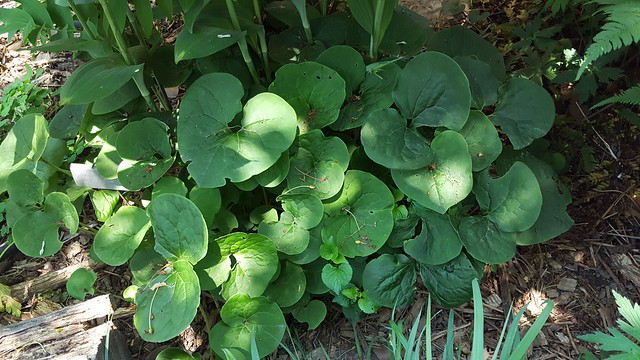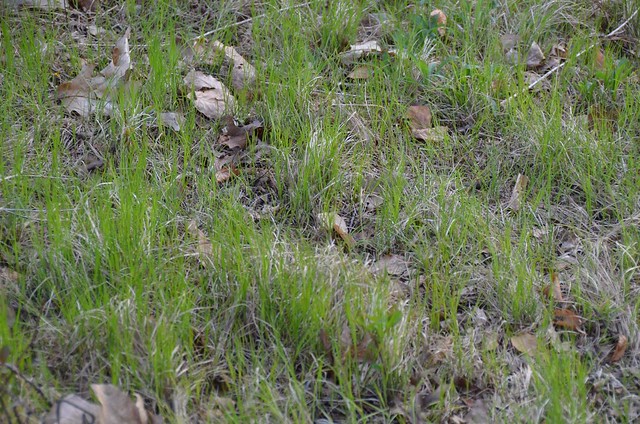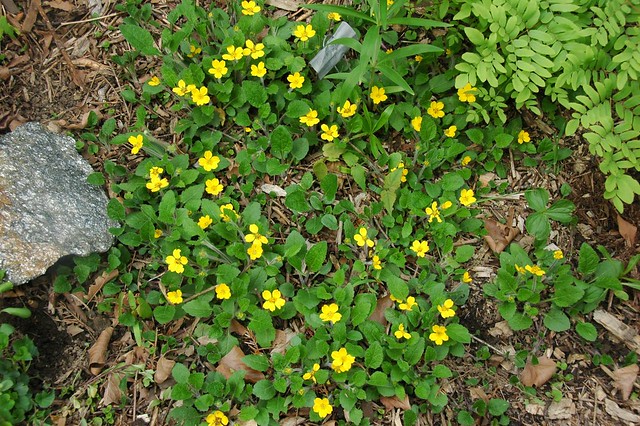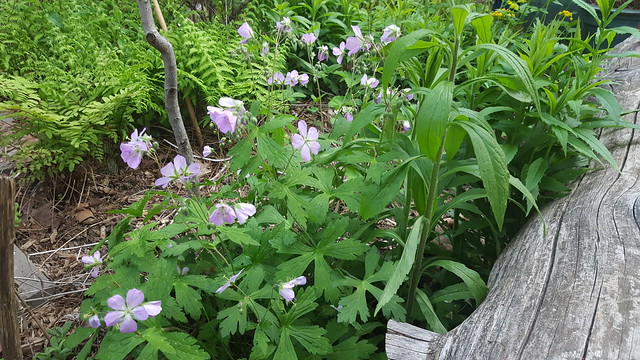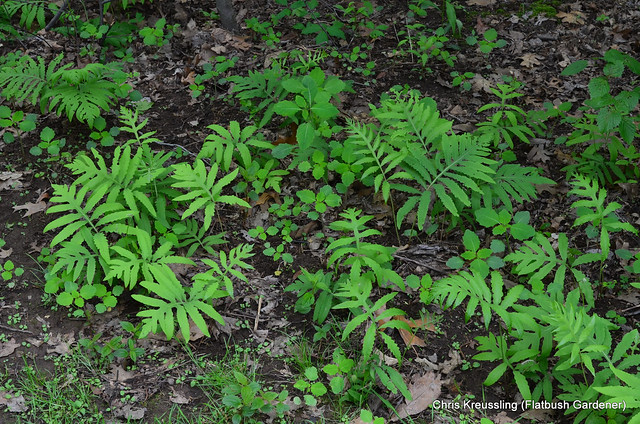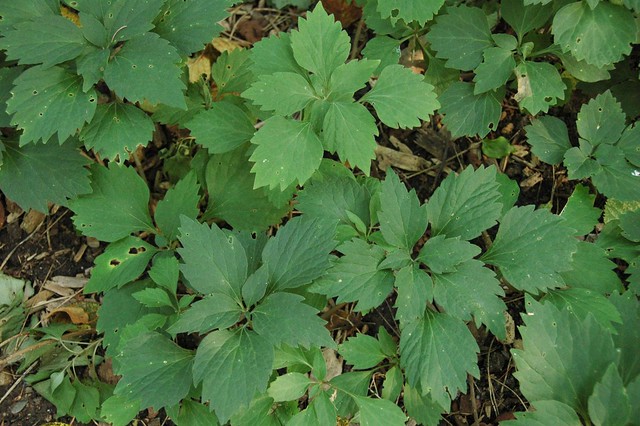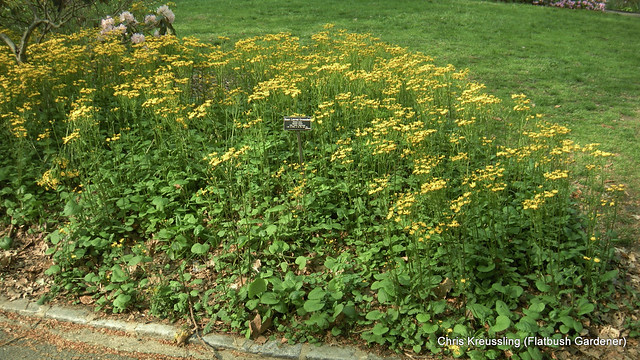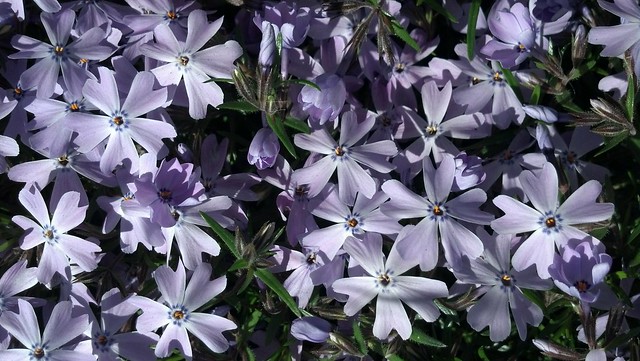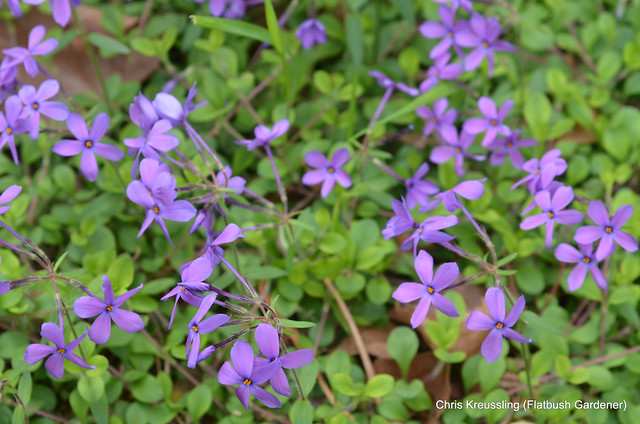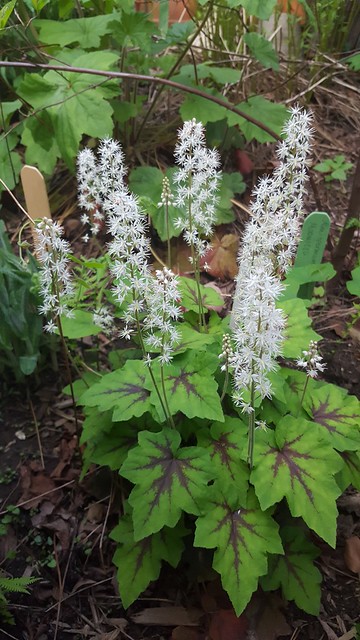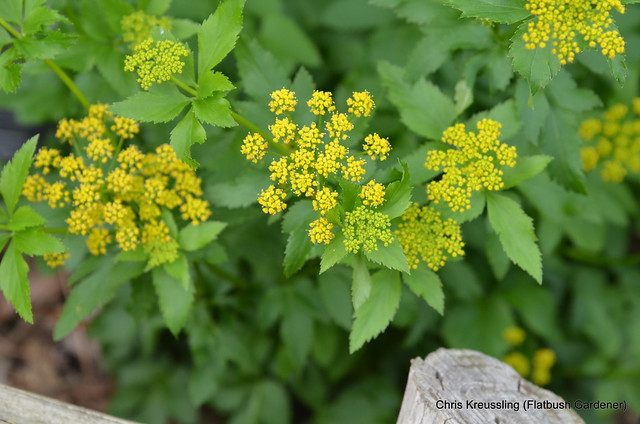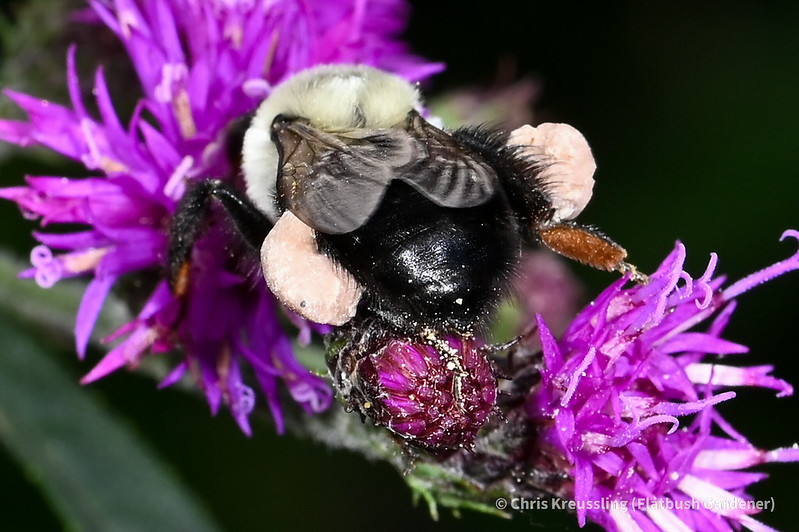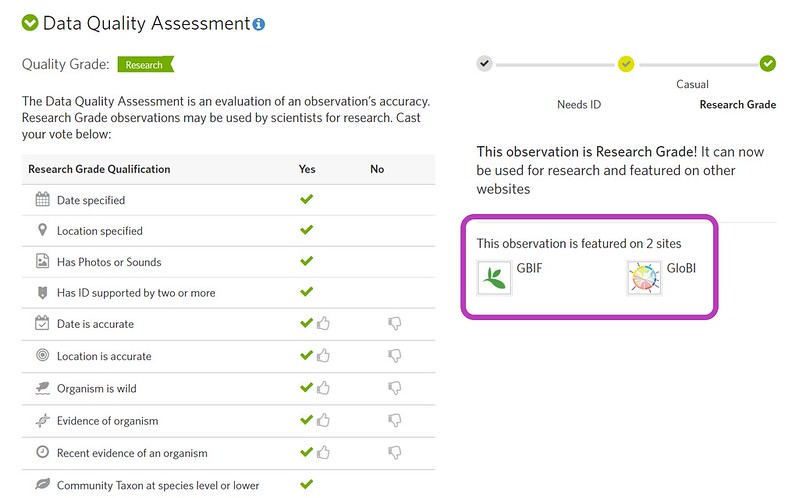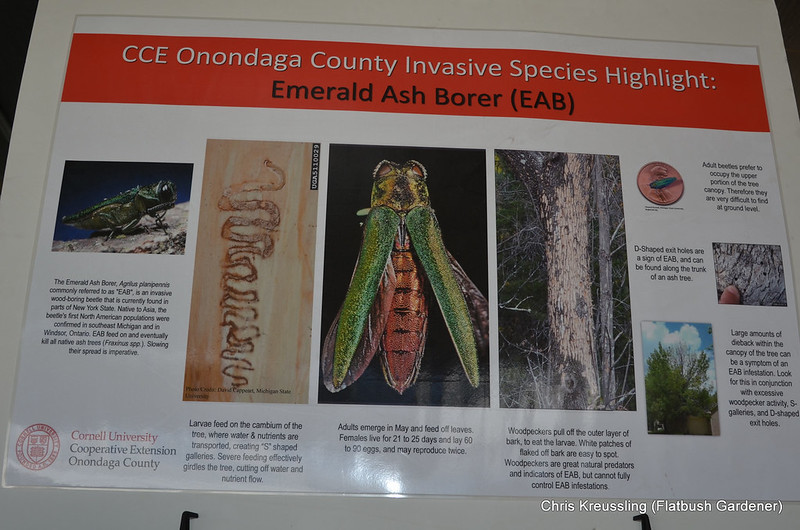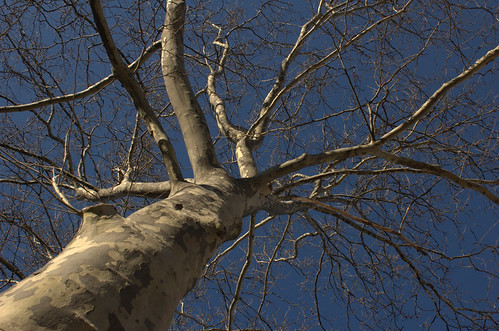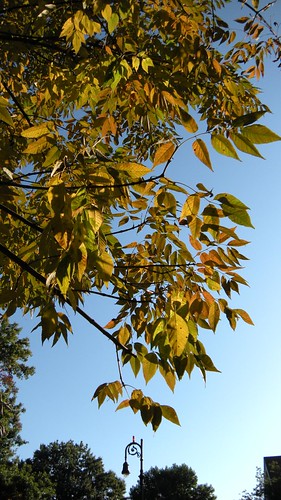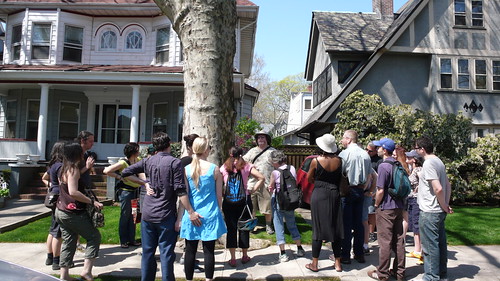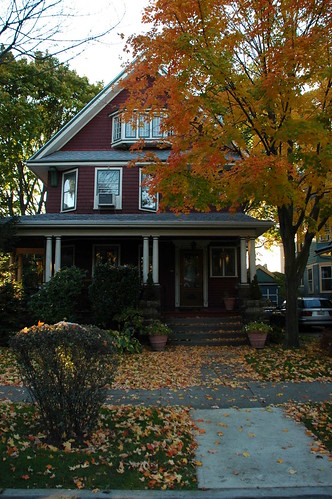Japanese Maple leaves (red), with Linden in the background (yellow), at the corner of Rugby Road and Cortelyou Road in Beverley Square West, Flatbush, Brooklyn, November 2007.
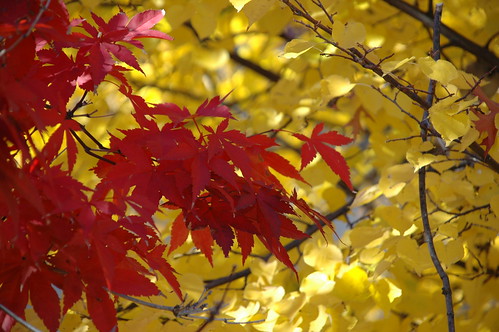
The Sustainable Flatbush Fall 2010 Street Tree Walking Tour will be this Sunday, October 24. Tours begin at 11am and 12noon. I’m proud to once again be one of your guides. Your other guide will be Sam Bishop, Director of Education of Trees NY. As in the past, tours will start at Sacred Vibes Apothecary, our other community partner. This is also listed as a NeighborWoods Month event.
After a dry summer, October brought ample rains just in time to salvage some fall foliage. Dogwoods, Locusts, and Ash Trees are showing strong color. The neighborhood should be at near-peak foliage conditions for the year for the tour.
On the tour, you can see:
- Acer platanoides, Norway Maple
- Aesculus hippocastanum, Horsechestnut
- Amelanchier, Serviceberry
- Betula nigra, River Birch
- Cercis canadensis, Redbud
- Cornus florida, Flowering Dogwood
- Cryptomeria japonica, Japanese Red Cedar
- Fraxinus americana, White Ash
- Ginkgo biloba, Ginkgo
- Gleditsia triacanthos, Honey Locust
- Liquidambar styraciflua, Sweetgum
- Metasequoia glyptostroboides, Dawn Redwood
- Pinus strobus, White Pine
- Platanus x acerifolia, London Plane
- Pyrus calleryana, Flowering Pear, Callery Pear
- Quercus palustris, Pin Oak
- Quercus robur ‘Fastigiata’, Columnar English Oak
- Sophora japonica, Japanese Pagoda Tree, Scholar Tree
- Tsuga canadensis, Eastern Hemlock
- Ulmus americana, American Elm
… and many more.
Map
View Sustainable Flatbush Fall 2010 Street Tree Walking Tour in a larger map
Press Release
FOR IMMEDIATE RELEASE
Brooklyn, NY October 17, 2010
SUSTAINABLE FLATBUSH FALL 2010 STREET TREE WALKING TOUR
Sunday, October 24, 2010
Ever wanted to leaf peep without leaving NYC? The Sustainable Flatbush 2nd Annual Fall Street Tree Walking Tour is a perfect opportunity to enjoy beautiful — and local — fall foliage in Brooklyn’s historic Victorian Flatbush! The neighborhood is filled with an incredible variety of breathtaking street trees—including some that are more than 100 years old! This year, our tree-expert tour guides will be Sam Bishop of Trees NY and neighborhood resident Chris Kreussling, aka Flatbush Gardener.
Throughout the tour, your street tree guide will…
- identify trees and their characteristics
- share interesting facts
- explore local tree history
- discuss the beneficial role of street trees in the urban environment
- explain basics of street tree stewardship
and much more!
Location:
Tours start at Sacred Vibes Apothecary, 376 Argyle Road, just south of Cortelyou Road.
Directions:
Take the Q train to Cortelyou Road and walk west after exiting the station toward Argyle Road. As a reminder, check the MTA website for schedule and service advisories before you head out.
Time:
Tours depart at 11:00 AM and 12:00 NOON.
Tours take about 2 hours to complete and are 1 mile in length.
This is a rain or shine event — please dress for the weather!
Suggested Donation: $5
CONTACT: info@sustainableflatbush.org / (718) 208-0575
Sustainable Flatbush brings neighbors together to mobilize, educate,
and advocate for sustainable living in our Brooklyn neighborhood and
beyond. For more information, please visit http://sustainableflatbush.org
[goo.gl GMAP]
Related Content
Previous Tree Tour Posts:
Factoids: Street Trees and Property Values, December 2, 2007
Factoids: NYC’s Street Trees and Stormwater Reduction, November 15, 2007
Basic Research: The State of the Forest in New York City, November 12, 2007
Albemarle Road, Local Landscape
Links
Sustainable Flatbush
Sacred Vibes Apothecary
Trees NY
NeighborWoods Month
